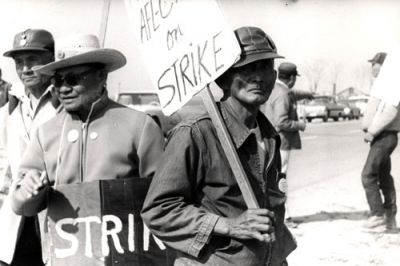3 Lessons for a Regional Western Electricity Market
California is paving the way for the creation of an independent regional organization to oversee Western energy markets. It can learn from mistakes made in other regions.

In case you missed it among all the other news, the California legislature passed AB 825 in September (and Gov. Gavin Newsom signed it as part of the big energy package), paving the way for the creation of an independent regional organization to oversee Western energy markets. This presents a whole set of interesting challenges and opportunities after years of failed attempts.
AB 825 builds on the work done by the West-Wide Governance Pathways Initiative. Launched by regulators from Arizona, California, New Mexico, Oregon, and Washington in 2023, the initiative seeks to lay the groundwork for a Western energy market overseen by an independent regional organization. Much of the American West remains without a regional transmission organization (RTO), hindering regional collaboration on transmission planning, capacity markets, and reliability. This is a serious impediment to achieving a decarbonized grid: Clean energy resources are heterogeneous across the West and can complement one another if combined into a unified market. Think abundant solar energy in the Southwest, consistent wind in the plains, and always-on hydrogen in the Northwest. A recent study prepared for the California Energy Commission agreed, finding that a Western day-ahead energy market could reduce gas generation within California by 31%, reducing California’s CO2 emissions by 11%.
Why have these gains been left on the table so far? Governance issues largely explain the West’s difficulty in building a regional energy market. The obvious candidate to lead a Western market would be the only independent transmission system operator currently active in the West: The California Independent Systems Operator (CAISO). CAISO is more than willing to play that role. It already operates the Western Energy Imbalance Market (WEIM), a real-time regional energy market. Reliability services across the western grid are also already largely managed by CAISO. Yet the sticking point has been CAISO’s governance. Under California law, its Board of Governors is appointed by the California Legislature. Other Western states are understandably concerned that CAISO would privilege California’s interests above those of other states. Instead, other states want to see a wholly new organization created, one that will be independent from any one state’s control.
The West-Wide Governance Pathways Initiative was tasked with developing and forming such an independent entity that could operate a Western real-time and day-ahead energy market, and could grow to provide more and more RTO services. The end goal of the initiative, it seems, is for the West to finally form its own RTO. This is a big deal. The reliability, cost, and environmental benefits the West stands to gain from forming an RTO are enormous—$2 billion in yearly ratepayer savings, according to a DOE study. It is also a big opportunity. The West can learn from twenty-five years of RTO operations in other parts of the country, and avoid many of the mistakes that those regions have made. Most essentially, the new entity should take care to avoid some of the governance structures that have led other RTOs to be captured by incumbent utility interests. There are a few lessons worth highlighting now that the Pathways Initiative is still in its planning phase.
1. Advisory Voting
The Initiative’s Step 2 Final Proposal sets forth a sectoral voting mechanism, as is common with most RTOs. Pathways proposes a system where individual entities vote on a given proposal, and those votes are then tallied at the sector level. This voting is ultimately advisory, and final decisions are still made by the regional organization’s Board. Stakeholders cannot veto a board decision, regardless of how much opposition exists. What we have seen in other regions is that RTO boards can fall prey to capture by incumbent interests, even when they are ostensibly independent. A crisis of confidence has engulfed the PJM Board of Directors, and ISO-NE’s board has a longstanding practice of abusing the “immediate-need” exemption to allocate project development to incumbent utilities, bypassing the competitive bidding process. This is to say that the boards of these regional organizations have historically not been on the side of consumers or the environment. Stakeholders should claim more than an “advisory” role in decision-making to hedge against a potentially captured board.
2. Affiliate Voting
Second, Pathways’ proposal makes no mention of affiliates’ voting rights. That is a real problem, especially when considering how voting will work within the regional organization. Under the proposed plan, voting will happen at the entity-level and be aggregated to determine whether a particular sector supports or opposes a proposal. If “significant opposition” exists, the Board will be encouraged to remand a proposal. Currently, suggested criteria for “significant opposition” include either one third of sectors having 70% or more opposing votes, or a simple majority of sectors opposing a proposal. Without rules on affiliate voting, incumbent utilities, which often have lots of different affiliates, will have an outsize voice in their sectors. PJM struggles with this, and now has a system where companies with multiple affiliates effectively have the ability to collaborate to block or advance proposals. Not counting affiliate votes is a simple and common-sense change to implement, and other RTOs (such as NYISO) already have.
3. Public Policy Goals
As it stands, the Pathways Initiative would form a Public Policy Committee tasked with identifying potential adverse impacts on state, local, and federal policy goals caused by the regional organization’s initiatives. This system is insufficiently proactive. We know that public policy requirements increasingly drive energy infrastructure needs. FERC’s Order 1000 explicitly asked RTOs to consider transmission needs driven by public policy requirements in recognition of that fact. In Order 1920, FERC expanded the role that state public policy goals play in the transmission planning process. If Pathways wants to lay the groundwork for its regional organization to eventually become a fully-fledged RTO, it should incorporate a proactive consideration of public policy goals in the RO’s decision-making. This would facilitate a smooth transition to full RTO status, and ensure that current decisions are made with forward-looking policy goals in mind.
All that being said, the Pathways Initiative represents a huge step forward for Western energy markets, even in its current form. The regional organization being planned now is clearly a stepping-stone towards full RTO services; something ratepayers across the West would benefit from. Enhanced regional collaboration could help unlock the full potential of renewable generation in the West, from wind in the plains to hydro in the Northwest, and get us to a decarbonized grid faster. But it would be a missed opportunity not to learn from the mistakes other RTOs have made. Pathways has a chance to create a governance structure that is truly responsive to stakeholder feedback, untainted by outsized incumbent influence. Let’s hope they take it.







The fed govt’s WAPA is only part of the equation and we now see how fraught can be reliance on fed govt for distribution (and equity) of anything. If it turns out that CAISO is not the right org or structure, I hope the WWGPI can create a viable alternative. I also hope the org in charge will start focusing on local generation and distribution for the next generation and gradually abandon the long-distance, high-voltage, above-ground paradigm that is now so outdated.